

Being the birthplace of death metal, it is no surprise that America boasts the largest death metal scene. It was especially active during the 1990s, and that is what I want to discuss over the next few issues. I will assume the reader is already familiar with popular acts such as Death, Possessed, Master, Autopsy, Obituary, Morbid Angel, Deicide, Cannibal Corpse, Immolation, Incantation, and others. Instead, I will focus on the more obscure acts, the great bands that never got the chance to truly shine.
The first such band is Sadistic Intent. The main reason why people know them is because all of the members played in Possessed for a time, but they also recorded three great EPs during the '90s. Next is Insanity, an excellent death-thrashing act with a turbulent history from the same city as Possessed. After that is Revenant, an incredible band from the same state as Ripping Corpse. Finally, there is Morbius. Yeah, yeah, we all know about the Morbius jokes. These guys played a unique flavor of death metal that incorporated some wondrous melodies.
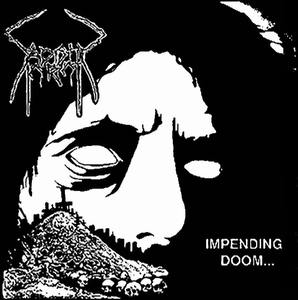
Sadistic Intent - Impending Doom
Sadistic Intent's first two demos were pretty rough, but their 1990 EP Impending Doom was when they truly got good. Drummer Joel Marquez mostly plays skank beats of varying intensity, but there are also moments on songs like "Existence" when he launches into blast beat assaults that draw heavy influence from Pete Sandoval. Bay Cortez's bass performance can be heard extremely well, and his low-pitched riffs make the music sound darker and more menacing. Vocalist Enrique Chavez performs a hoarse growl that sounds like a harsher and more frightening rendition of what German thrash metal bands were doing around the same time. The guitars are played by Rick Cortez, Bay's brother. His many palm-muted riffs have a gritty distortion similar to Swedish death metal. This influence is also made evident by the simple compositions. Things are made even more diabolical by the inclusion of tremolo riffs. All of this is topped off by maniacal high-pitched solos inspired by Slayer. What a great and thrilling EP this was.
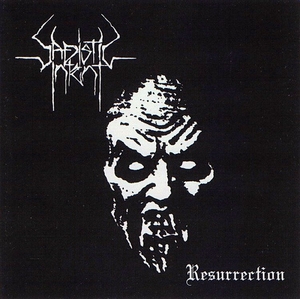
Sadistic Intent - Resurrection
Four years after Impending Doom, Sadistic Intent release another EP called Resurrection. To say the band improved their work would be an understatement. Most of the remaining thrash metal elements have become full-blown death metal, the instrumental work has become more intricate, and the songwriting has become more nuanced and gripping. Joel Marquez's blast beats and skank beats are more precise and hit much harder. Not only that, but he also plays slow, creeping beats. He then punctuates these various patterns with elaborate fills, again taking notes from Pete Sandoval. Enrique Chavez left the band one year after the release of Impending Doom, so bassist Bay Cortez also took on vocal duties. His hoarse growls sound quite deep on occasion, almost reminding me of Dawn of Possession-era Immolation. Vince Cervera joins Rick Cortez on guitars. Together they play dark palm-muted riffs and infernal tremolo riffs that are heavily inspired by Morbid Angel. They still play mid-paced chord progressions, but now these are also accompanied by slow and ominous passages like those on "Asphyxiation." All of these different riffs are more detailed in their design. This increase in complexity is even more obvious in the many rapidly screeching solos. Impending Doom was great, but Resurrection is on a completely different level. It's a wondrous and stellar release.
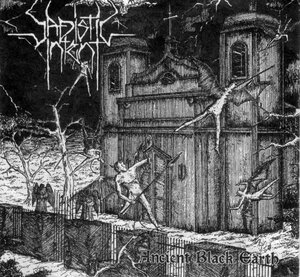
Sadistic Intent - Ancient Black Earth
Three years passed between Resurrection and Ancient Black Earth, and in that time, Sadistic Intent's music became more akin to Morbid Angel, though pieces of their original formula are still present. Drummer Joel Marquez left the band one year after the release of Resurrection, so he was replaced with Brainstorm member Emilio Marquez (no relation). He performs all the same blast beats and skank beats as his predecessor, but he also plays a larger number of intricate mid-paced rhythms that are packed full of double bass, again drawing influence from Pete Sandoval. The fills are even more elaborate. Bay Cortez's vocals are a bit stronger, but otherwise sound the same. Guitarists Rick Cortez and Vince Cervera put on a stellar performance. The palm-muted riffs and tremolo riffs not only sound sinister, but they're also a bit more complex than they were on the previous album. This added detail makes the music more engaging overall. They also play some mid-paced rhythms that have some nice groove to them. Though the EP contains only three songs, it contains the band's best solos. They are frantic, dynamic, and finely crafted. Ancient Black Earth is an incredible release. Every single part of it is sublime. Sadistic Intent are still around, but they have not released any new material in a long time. Will they put out a full-length at some point? Only time will tell.
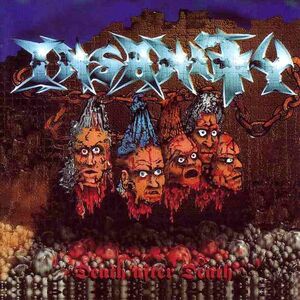
Insanity - Death After Death
Insanity was one of the first death metal bands. They had a lot of potential but were unfortunately cursed with bad luck. Their first vocalist, Joe DeZuniga, died of heart disease at the young age of 21. They were then plagued by constant lineup changes. The band was so unstable that they dissolved and reformed four times since their inception in 1985. Their latest reformation was in 2018. They could not even release their first full-length album Death After Death without being confronted with a host of issues. They recorded it in late 1991, but could not mix it until April 1992. It was not released until June of the following year. Despite these tumultuous circumstances, they managed to create something amazing.
The production is a bit uneven, with some songs sounding more clear than others, but this does not diminish the quality of the experience at all. All of these songs were composed at different points in the band's development, and this is made evident by the songwriting. Simple songs like "Attack of Archangels" and "Fire Death Fate" were written in 1985, while more complex songs like "Rotting Decay" were written in 1989. Listening to a simple thrashing song one moment and a more intricate and detailed song the next may induce whiplash in some, but I didn't have a problem with it.
The drums are played by Prakash Sharma. Insanity was the only band he ever played in, and he retired from playing music in 2001 after a severe back injury. He does a fantastic job here. He plays a lot of simple blast beats that create a frantic feeling. In between these he plays stomping mid-paced rhythms that are frequently broken up by elaborate fills. Bassist Josh Santaga mostly follows the guitars, but his skills truly shine on the more complex songs such as "Morbid Lust." Vocalist Bob Martinez performs a hoarse growl that sounds like a more extreme rendition of what men like Chuck Schuldiner and Donald Tardy had done. An important thing to note is that the 2000 and 2010 re-releases of this album feature re-recorded vocals by Dave Gorsuch. I will let the readers decide which one they like better.
Best of all is the guitar work of Matt Janko and Dave Gorsuch. During the fast-paced parts they play vicious palm-muted riffs that sound like a more extreme version of Slayer, and during the mid-paced parts they play chord progressions that are somewhat infectious at times. They also throw in a lot of rising and falling arpeggios that create a chaotic feeling. Elaborate flourishes are scattered about (though they are mostly concentrated in "Rotting Decay" and "Morbid Lust") but the most impressive technical displays are found in Gorsuch's solos. He is obviously influenced by Kerry King, but he gives his own unique flavor to that formula. They're rapid and ferocious, but they also have a fantastic sense of flow. The most impressive display can be found on "Rotting Decay." That solo which begins at the halfway point lasts for a minute and a half, but it never gets boring or self-indulgent. It's gripping from start to finish.
Despite its flaws, Death After Death is one of the best death metal albums ever made. The instrumental work is incredible. The thrashing fury and occasional displays of complexity complement each other perfectly. This thing deserves a lot more attention because contained within is a primal spirit which is sorely lacking in the modern metal scene.
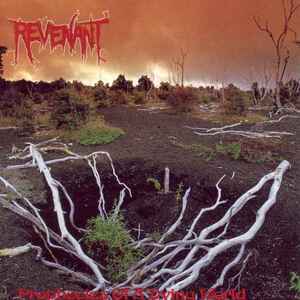
Revenant - Prophecies of a Dying World
Revenant was one of New Jersey's first death metal bands. Like their compatriots Ripping Corpse, they started off as a thrash metal band, but gradually morphed into death metal as the years passed. They put out three demos and an EP before recording their full-length debut Prophecies of a Dying World in 1991. They would put out three more demos and an EP before splitting up in 1995. They also released a posthumous EP called Overman in 2002. An interesting thing to note is that Revenant was John McEntee's first band. He was part of the original 1986 lineup, left in 1989, and formed Incantation immediately thereafter. Paul Ledney of Profanatica was also an original member, but he left after only a few months.
Production duties were handled by Bill Klatt. This same man also produced Ripping Corpse's Dreaming with the Dead. That album sounded fantastic, and so does this one. It has a perfect mix of heaviness and clarity. Even the bass can be heard extremely well. Speaking of which, future Methane member Tim Scott plays bass. He churns out a lot of excellent heavy riffs, most notably near the end of "Asphyxiating Time." The drums are played by Will Corcoran. His galloping rhythms are filled with pummeling double bass. His simple blast beats are extremely energetic, the most aggressive of which can be found on "Spawn" and "The Unearthly." He also breaks up his slow and creeping rhythms with extravagant fills. His best performance can be found on "Ancestral Shadows."
Henry Veggian does the vocals. When the band started, his vocals were angry and nasally, but they eventually evolved into the hoarse growls that are utilized on this album. He's sort of like Scott Ruth in a way. These vocals are tame compared to what Chris Barnes was doing around the same time, but they still sound nice and fit the music quite well. The guitars are played by both Henry Veggian and Dave Jengo. Traces of their thrash metal roots can be found in their many palm-muted riffs and arpeggios. Their primary focus, however, is death metal darkness, and this makes itself known through tremolo riffs and stomping power chords. All of these different riffs feature some of the best songwriting in death metal. Despite the long runtime, not a single passage on here feels like filler. Every moment is engaging in some way and flow perfectly from one to the next. They also play some excellent solos whose rapid speeds and screeching sounds channel Slayer.
I have had this album for many years, but I never got around to listening to it until recently. I should have done so sooner, because this is one of the finest death metal albums I've ever heard. The songwriting and instrumental work are incredible. Every song is a thrilling work of art. Few could hope to create something as compelling as this.
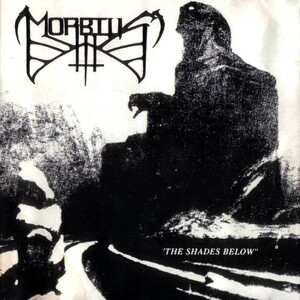
Morbius - The Shades Below
Morbius is one of the oldest death metal bands from Virginia. They formed in 1990 and released their full-length debut The Shades Below two years later. It was re-released by Last World Records two years after that. It then received a remaster in 2014, which was distributed by Lost Apparitions Records. In case anyone is wondering, the art piece on the cover is "Resistance (The Black Idol)" by Frantisek Kupka. That same piece was also featured on the cover of Amebix's Winter single.
This album's production is a bit on the raw side. It's a bit quiet and muffled, making it hard to hear all the elements clearly without cranking it loud. I have not listened to the remastered version, so I don't know if this problem had been fixed. I am basing my opinion on the original release.
Despite the unpolished production quality, the music is still great. Morbius were not interested in pushing the boundaries of brutality or complexity like most other death metal bands around the same time period. They were instead focused on creating good compositions that combined death metal with doom metal while also sprinkling in some tasteful melody. The drums are played by Matt Sylvester. He plays some simple blast beats on occasion, but for the most part he plays lively mid-paced rhythms and galloping rhythms filled with double bass. When things slow down he plays thoughtful, intricate patterns, and he punctuates all of these with elaborate fills.
Both the bass and the vocals are done by Jason Weir. His bass work mostly follows the guitars, but there are songs like "Remains of Jahveh" where they become more prominent and deliver some engaging riffs. His vocals are much more interesting. He performs a growl that sounds like a deeper David Vincent. Guitar duties are handled by Andy Sylvester and Virasack Bee Somphone (V. Bee for short). During the mid-paced parts they play some pretty nice palm-muted riffs and power chords, and when things slow down they play drawn-out passages that create a dark and dreary atmosphere. They then make things more thrilling by throwing in some arpeggios. Most interesting of all are the various bits of melody scattered throughout. They make the music much more vibrant than it otherwise would be. My favorite melodic leads can be found on "Tapping the Vein" and "The Frost." They also play some pleasing clean guitar on "Mortal Realms."
If you can look past the production problems, then you'll find some solid death metal with great songwriting and nice melodies.

Morbius - Alienchrist
Three years after releasing their full-length debut, Morbius recorded another album called Alienchrist. This is their most well-known work, helped in part by the cover art provided by Phil Merkle. It's not as impressive as something by Dan Seagrave, but its rich colors breed fascination.
The production has improved, for it's no longer as quiet or muffled as their first album. Matt Sylvester's blast beats have gotten stronger, but he still focuses on playing finely-crafted mid-paced patterns and galloping rhythms. The double bass has a great thumping sound, and the fills have become more complex. Jason Weir's vocals have taken on more of a burping quality. His bass work is a lot more prominent in the mix, which helps to make the music sound deeper and heavier. Andy Sylvester and V. Bee still play plenty of splendid palm-muted riffs and power chords, but they are now placing a greater emphasis on the melody, which makes the music more atmospheric. It makes you feel like you're wondering through a desolate landscape painted red by a setting sun.
Not only does Alienchrist have better production than The Shades Below, but it also has more interesting songwriting and instrumental work. It's a splendid experience.

Morbius - Sojourns Through the Septiac
Though not as well-known, Morbius' 1999 full-length Sojourns Through the Septiac is, in my opinion, better than Alienchrist. The production has been polished to near perfection. It possesses both clarity and force. Matt Sylvester puts on a stellar performance. His blast beats are pulverizing and precise. Much more impressive are his many complex mid-paced patterns and fills. The most outstanding display of his skills can be found on "The Suicide of Saturn."
Jason Weir's burping growls sound more menacing and are delivered more forcefully. His bass work has gotten more complex and has been given even more room to shine, most notably on "Drowning Pisces." V. Bee left the band one year after the release of Alienchrist, so Andy Sylvester handles all of the guitar work. He does an excellent job. The riff structures have taken on a progressive metal quality. This is especially noticeable on songs like "Nature of Descent." The many arpeggios remind me of late-era Death, as do the elaborate chord progressions. On songs like "Elemental Prisms" he plays tremolo riffs that draw heavily from black metal. He then includes melodic passages that make you feel like you're floating through the mystical reaches of space.
Sojourns Through the Septiac is Morbius' best album to date. They evolved into something spectacular and unique. It makes me wish they would record a new full-length, but they have not put out any new material in a very long time.